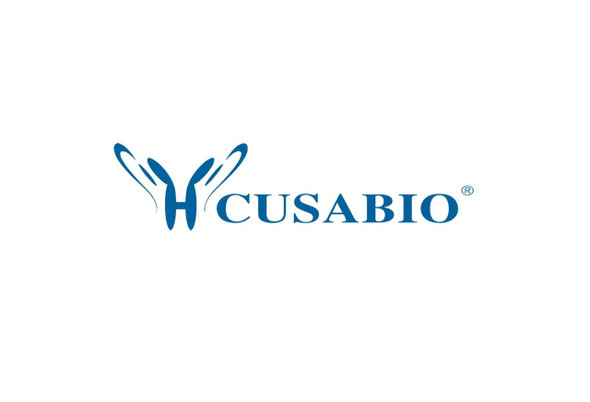Cusabio Saccharomyces cerevisiae Recombinants
Recombinant Saccharomyces cerevisiae Glycerol 2-dehydrogenase (GCY1) | CSB-YP321197SVG
- SKU:
- CSB-YP321197SVG
- Availability:
- 3 - 7 Working Days
Description
Recombinant Saccharomyces cerevisiae Glycerol 2-dehydrogenase (GCY1) | CSB-YP321197SVG | Cusabio
Alternative Name(s): Galactose-inducible crystallin-like protein 1
Gene Names: GCY1
Research Areas: Others
Organism: Saccharomyces cerevisiae (strain ATCC 204508 / S288c) (Baker's yeast)
AA Sequence: MPATLHDSTKILSLNTGAQIPQIGLGTWQSKENDAYKAVLTALKDGYRHIDTAAIYRNEDQVGQAIKDSGVPREEIFVTTKLWCTQHHEPEVALDQSLKRLGLDYVDLYLMHWPARLDPAYIKNEDILSVPTKKDGSRAVDITNWNFIKTWELMQELPKTGKTKAVGVSNFSINNLKDLLASQGNKLTPAANQVEIHPLLPQDELINFCKSKGIVVEAYSPLGSTDAPLLKEPVILEIAKKNNVQPGHVVISWHVQRGYVVLPKSVNPDRIKTNRKIFTLSTEDFEAINNISKEKGEKRVVHPNWSPFEVFK
Source: Yeast
Tag Info: N-terminal 6xHis-tagged
Expression Region: 1-312aa
Sequence Info: Full Length
MW: 37.1 kDa
Purity: Greater than 90% as determined by SDS-PAGE.
Relevance: Glycerol dehydrogenase involved in glycerol catabolism under microaerobic conditions. Has mRNA binding activity.
Reference: The nucleotide sequence of Saccharomyces cerevisiae chromosome XV.Dujon B., Albermann K., Aldea M., Alexandraki D., Ansorge W., Arino J., Benes V., Bohn C., Bolotin-Fukuhara M., Bordonne R., Boyer J., Camasses A., Casamayor A., Casas C., Cheret G., Cziepluch C., Daignan-Fornier B., Dang V.-D. , de Haan M., Delius H., Durand P., Fairhead C., Feldmann H., Gaillon L., Galisson F., Gamo F.-J., Gancedo C., Goffeau A., Goulding S.E., Grivell L.A., Habbig B., Hand N.J., Hani J., Hattenhorst U., Hebling U., Hernando Y., Herrero E., Heumann K., Hiesel R., Hilger F., Hofmann B., Hollenberg C.P., Hughes B., Jauniaux J.-C., Kalogeropoulos A., Katsoulou C., Kordes E., Lafuente M.J., Landt O., Louis E.J., Maarse A.C., Madania A., Mannhaupt G., Marck C., Martin R.P., Mewes H.-W., Michaux G., Paces V., Parle-McDermott A.G., Pearson B.M., Perrin A., Pettersson B., Poch O., Pohl T.M., Poirey R., Portetelle D., Pujol A., Purnelle B., Ramezani Rad M., Rechmann S., Schwager C., Schweizer M., Sor F., Sterky F., Tarassov I.A., Teodoru C., Tettelin H., Thierry A., Tobiasch E., Tzermia M., Uhlen M., Unseld M., Valens M., Vandenbol M., Vetter I., Vlcek C., Voet M., Volckaert G., Voss H., Wambutt R., Wedler H., Wiemann S., Winsor B., Wolfe K.H., Zollner A., Zumstein E., Kleine K.Nature 387:98-102(1997)
Storage: The shelf life is related to many factors, storage state, buffer ingredients, storage temperature and the stability of the protein itself. Generally, the shelf life of liquid form is 6 months at -20?/-80?. The shelf life of lyophilized form is 12 months at -20?/-80?.
Notes: Repeated freezing and thawing is not recommended. Store working aliquots at 4? for up to one week.
Function: Glycerol dehydrogenase involved in glycerol catabolism under microaerobic conditions. Has mRNA binding activity.
Involvement in disease:
Subcellular Location: Cytoplasm
Protein Families: Aldo/keto reductase family
Tissue Specificity:
Paythway:
Form: Liquid or Lyophilized powder
Buffer: If the delivery form is liquid, the default storage buffer is Tris/PBS-based buffer, 5%-50% glycerol. If the delivery form is lyophilized powder, the buffer before lyophilization is Tris/PBS-based buffer, 6% Trehalose, pH 8.0.
Reconstitution: We recommend that this vial be briefly centrifuged prior to opening to bring the contents to the bottom. Please reconstitute protein in deionized sterile water to a concentration of 0.1-1.0 mg/mL.We recommend to add 5-50% of glycerol (final concentration) and aliquot for long-term storage at -20?/-80?. Our default final concentration of glycerol is 50%. Customers could use it as reference.
Uniprot ID: P14065
HGNC Database Link: N/A
UniGene Database Link: N/A
KEGG Database Link: KEGG
STRING Database Link: STRING
OMIM Database Link: N/A









